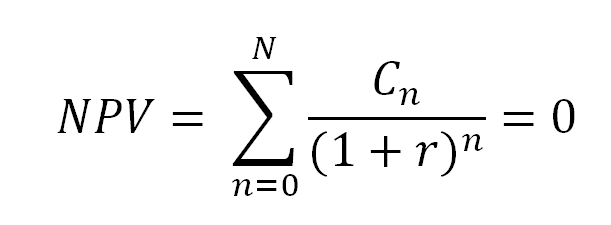Internal rate of return is yet another economic model for project selection. Internal rate of return is defined as the rate of interest at which the revenue of the project and the cost of the project are equal. This value is also known as a break even value, where the present value of the future cash flow is equal to the initial investment. The rate of return is referred to as internal because of the fact that you do not consider environment factors, such as inflation, when calculating this rate of return.
To understand this model better, you can consider an investment you make. When making a investment, you always expect certain returns from the investment and select an investment option that offers the highest rate of return from the investment. Similarly, when the organization has multiple projects to invest in, you calculate the rate of return for all the projects and select the one with highest rate of return.
You use internal rate of return to measure and compare the profitability of the project with respect to the investment. Calculating the internal rate of return not only enables you to decide on investing in a project, but also compare the profitability of the projects and select a project that has a better profitability than others. You always select a project that has higher internal rate of return. If you have multiple projects that require similar investment, then calculating and comparing internal rate of return would help you to select the project among the candidate projects. Higher is the internal rate of return more profitable would the project.
Calculating the internal rate of return is quite complicated and you need expertise to calculate it. You can use the following formula to calculate the internal rate of return:

Here:
- NPV is the net present value.
- N is the total number of time periods.
- n is a positive integer.
- C is the cash flow. Cash flow is a positive value of it is a revenue and negative if it is an investment.
- r is the internal rate of return.
You can either use expertise to calculate the internal rate of return my using the preceding formula or use specialized software, such as Microsoft Excel, to calculate the internal rate of return.
Always remember that you can never have a negative value for internal rate of return. Additionally, the calculating the internal rate of return enables you to use it as a decision tool to select a project. However, the internal rate of return might not always be equal to the compounded rate of return on the investment you make in the project.
